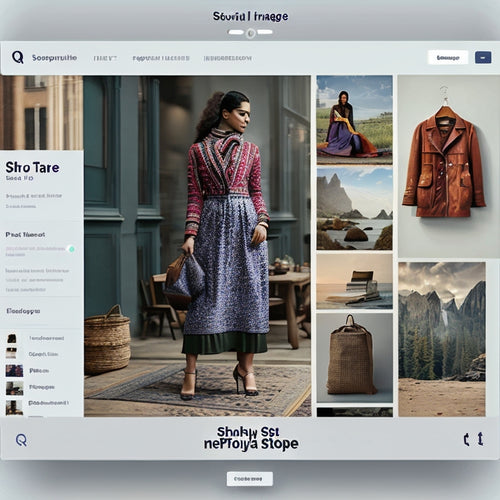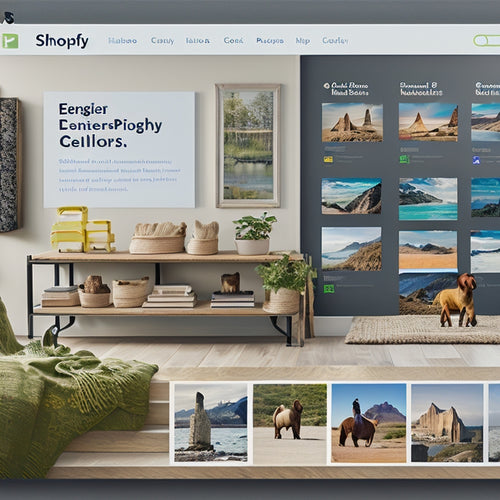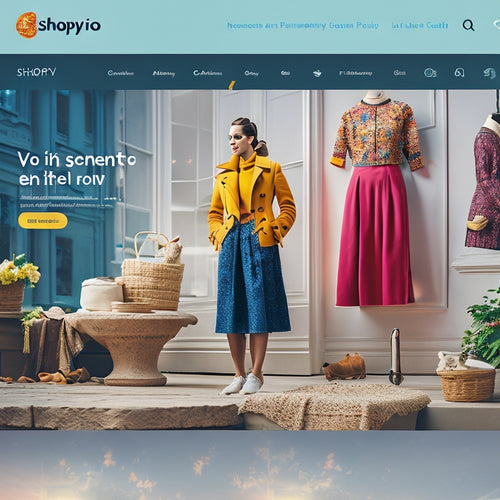
Crafting Professional Business Cards: Design, Print Success
Share
You're about to create a game-changing business card that showcases your professional brand and makes a lasting impression. First, design a visually stunning card that aligns with your brand's image and psychology of color. Next, craft compelling content that balances clarity with style, including essential details and consistent visual appeal. Then, explore printing options that fit your budget and brand, from DIY to online services. Don't forget to choose the perfect paper that complements your design and adds uniqueness. Finally, add innovative embellishments that set your card apart. Now, get ready to take your business card to the next level.
Key Takeaways
• Ensure a consistent visual brand by aligning layout, font, and color scheme with your brand's image and message.
• Balance essential information with white space to create a clear, concise, and clutter-free design.
• Choose high-quality paper with a suitable finish, texture, and weight to enhance the card's durability and visual appeal.
• Select a printing option that effectively represents your brand, considering factors like paper type, quantity, and time frame.
• Add innovative embellishments, personalized touches, and industry-specific enhancements to set your business card apart and showcase your expertise.
Designing a Professional Image
When crafting your business card, remember that the visual elements - from the layout to the font - should work together to convey a professional image that accurately represents you and your brand. You want to make a great first impression, after all!
Consider the psychology of color: do you want to evoke feelings of trust with blue or excitement with orange? Your font selection is also critical, as serif fonts like Times New Roman can appear traditional, while sans-serif fonts like Helvetica can look modern.
Balance these elements carefully to create a cohesive look. By doing so, you'll create a business card that not only looks great but also effectively communicates your brand's personality and values.
Crafting Compelling Content
As you craft the content for your business card, consider what essential information you need to convey to make a lasting impact on potential clients and partners.
You want to strike a balance between providing enough details and avoiding clutter. Be creative with your content, but prioritize clarity and brevity.
Guarantee your brand's visual appeal is consistent across all marketing materials, including your business card. Your full name, title, business name, and address are must-haves, but you may also want to include additional elements like a fax number, picture, or social media handles.
Remember to choose readable fonts and keep your design clean and simple.
Exploring Printing Options
You've carefully crafted your business card design, now it's time to bring it to life by choosing the right printing option that fits your needs and budget.
For a DIY approach, consider home printing using services like Microsoft Word or Avery templates. Keep in mind color schemes and ink usage to guarantee high-quality results.
If you need larger batches or higher quality, online services are the way to go. They offer a wide range of options and finishes, guaranteeing your business cards stand out. When choosing an online service, consider factors like paper type, quantity needed, and time frame for printing.
With the right printing option, your business card will effectively represent your brand and make a lasting impression.
Selecting the Right Paper
Select a paper color that complements your design, such as classic white or cream for easy printing, or bold brights to make your card stand out.
When choosing a paper, consider the following:
-
Paper weight: Opt for a sturdy paper weight that feels premium, such as 14pt or 16pt, to guarantee your card doesn't bend or tear easily.
-
Paper finishes: Choose from a range of finishes, including glossy, matte, or uncoated, to achieve the desired look and feel for your brand.
-
Texture: Add an extra layer of visual interest with textured paper options, such as linen or recycled paper, to create a unique and memorable business card.
Adding Value and Finishing Touches
Now that you've nailed the perfect paper, it's time to think about what sets your business card apart from the rest. You can add innovative embellishments, showcasing your expertise, and personalized touches that speak to your industry. For instance, a real estate agent could include a housing cost table on the back of their card, while a graphic designer might add a QR code linking to their portfolio.
| Embellishments | Industry-Specific Enhancements |
|---|---|
| QR code | Portfolio link for designers |
| Holographic foil | Luxury product showcase |
| Die-cutting | Custom shapes for creative fields |
| Spot UV | High-end product highlighting |
Frequently Asked Questions
Can I Use a Personal Photo on My Business Card?
When deciding if you can use a personal photo on your business card, consider how it'll impact your professional image. Will it enhance your personal branding or detract from it? Ask yourself if it's appropriate for your industry and target audience.
Do I Need to Include a QR Code on My Business Card?
You don't need a QR code on your business card, but it can be a great way to share extra info, like your portfolio or social media links. Alternatively, use that space for a call-to-action or a unique design element that sets you apart.
Can I Design a Business Card for a Side Hustle or Freelance Work?
"A million opportunities await! You can absolutely design a business card for your side hustle or freelance work, showcasing your unique side hustle branding and freelance networking style through creative customization that makes a professional impact."
Are There Any Specific Design Rules for Business Cards in My Industry?
When designing a business card for your industry, balance industry standards with design creativity. Research what works in your field, then add your unique twist to make your card stand out while still looking professional.
Can I Use a Non-Standard Business Card Size or Shape?
'Hey, rebel! You want to break free from traditional rectangular cards? Go for it! Square cards or unusual shapes can make your creative design stand out, but make sure they still fit in wallets and aren't too quirky for clients.'
Related Posts
-

How Do I Add Social Media Handles to My Shopify Store
This article aims to provide an informative and strategic guide on how to add social media handles to a Shopify stor...
-

What Can Shopify Integrate With
This article aims to explore the various integration options available for Shopify. By examining the benefits of int...
-

Top Email Marketing Apps for Shopify
Email marketing is a critical component of e-commerce, facilitating sales and customer engagement. Shopify users hav...


